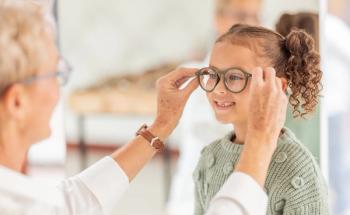
Understanding the strengths and weaknesses of different solutions
Many patients may assume their solution of choice will do the job and that, perhaps, the differences represented on the shelf are minimal. But we know that contact lens solutions are complex formulations of biocides, buffering agents, and surfactants, and that the balance between these agents must be nearly perfect.
Many patients may assume their solution of choice will do the job and that, perhaps, the differences represented on the shelf are minimal. But we know that contact lens solutions are complex formulations of biocides, buffering agents, and surfactants, and that the balance between these agents must be nearly perfect. Unfortunately, though each element within a solution has a job to perform, it is sometimes accompanied by some level of sacrifice to the ocular surface. It is our responsibility as primary eyecare providers to understand the strengths and pitfalls of current solutions and to make clear recommendations for lens care products to our patients.
Recently, a group of 283 subjects wearing senofilcon A (Acuvue Oasys, Johnson & Johnson Vision Care) as a daily wear (DW) lens and using one of four multipurpose solutions (MPS) or a hydrogen peroxide system were evaluated and compared to patients wearing senofilcon A as a daily disposable (DD) lens.1 Of the four MPS studied, two were PHMB solutions and two Polyquad/Aldox solutions. Three subjective parameters were used to rate each subject’s wearing experience: comfort at insertion, end-of-day comfort, and end-of-day dryness.
Researchers also evaluated the incidence rate of two adverse events (AE), corneal epithelial infiltrates (CEI) and solution-induced corneal staining (SICS), as well as the effect of these AE on the subject’s experience (comfort and dryness). Because all subjects wore the same brand of lens and the results were compared to its use as a DD lens (i.e. without solution), this review was unique in its ability to isolate the comfort ratings and adverse events to the lens care product alone.
Comparing adverse events
It is no surprise that patients wearing senofilcon A as a DD lens experienced fewer CEI (0) and SICS (1), and had the highest ratings relative to comfort at insertion and end of day, and end-of-day dryness. Among subjects using solution, the Polyquad/Aldox group scored the highest comfort rating in each category, followed by the H202 group, and then PHMB.
When comparing adverse events among DW patients, those using H202 had the lowest incidence of CEI or SICS. And those using Polyquad/Aldox solutions had a lower incidence of adverse events compared to those using PHMB solutions. There is a continued debate, however, as to the significance of these events, especially SICS.
In this study, regardless of the solution used, patients experiencing either CEI or SICS rated their comfort lower in each of the three categories compared to those without adverse events. This demonstrates that both CEIs and SICS have a negative effect on clinical patient experience.
After isolating adverse events and comfort ratings to the lens care product, the researchers established that the H202 solution was associated with fewer AE but delivered inferior comfort scores compared to the Polyquad/Aldox solutions, and the inverse was true. The PHMB users reported the lowest comfort scores and incurred the highest incidence of AE.
While the first study showed a very clear-cut relationship between adverse events and comfort ratings, a second study, with more variables, showed no correlation. In this study, researchers compared AE rates and comfort scores among 28 combinations of lenses and solutions, using approximately 40 patients per combination.2 Four solutions were studied: H202 system, PHMB, Polyquad/Aldox with EDTA, and Polyquad/Aldox without EDTA. Results were also compared with those wearing DD lenses.
Researchers here included a wide range of adverse events as opposed to isolating just CEI or SICS. Again, DD patients had significantly fewer AE compared to any DW combination, though comfort was not universally superior. Among the lens and solution combinations, H202 had the lowest AE rate. However, both the comfort ratings and AE rates varied significantly according to the specific combination of lens and solution. There was no consistency in performance with any one solution.
This study could not correlate discomfort to adverse events, but it is important to consider that by using multiple lens materials there were many additional factors that influenced patient comfort. Regardless of whether or not patients are aware of a change in their comfort, our goal is certainly to minimize unfavorable events of any kind.
We gain tremendous knowledge through research. But sometimes when industry products are involved, there can be conflicting reports about the underlying cause of an adverse event or its true implication in patient care. Ultimately, it is our responsibility as practitioners to sift through the data, relate it to what we see in our own practice, and form our beliefs accordingly.
But it is essential that we differentiate between preservatives and products and form some sort of belief. Only when we are convicted of the difference between products will patients be convicted that there is a difference. With conviction on product differentiation comes conviction on cleaning protocol and compliance.
Ultimately our goal is to keep patients healthy and happy in their contact lenses and keep them in the practice. An important step in that process is having patients follow our recommendations on what products to use and how to use them. This is unobtainable without the essential step of patient education.ODT
References
1. Lazon de la Jara P, Papas E, Diec J, Naduvilath T, et al. Effect of lens care systems on the clinical performance of a contact lens. Optom Vis Sci. 2013 Apr; 90(4):344-50.
2. Diec J, Paps E, Naduvilath T, Xu P, et al. Combined effect of comfort and adverse events on contact lens performance. Optom Vis Sci. 2013 Jul; 90(7):674-81.
Newsletter
Want more insights like this? Subscribe to Optometry Times and get clinical pearls and practice tips delivered straight to your inbox.



















































.png)


